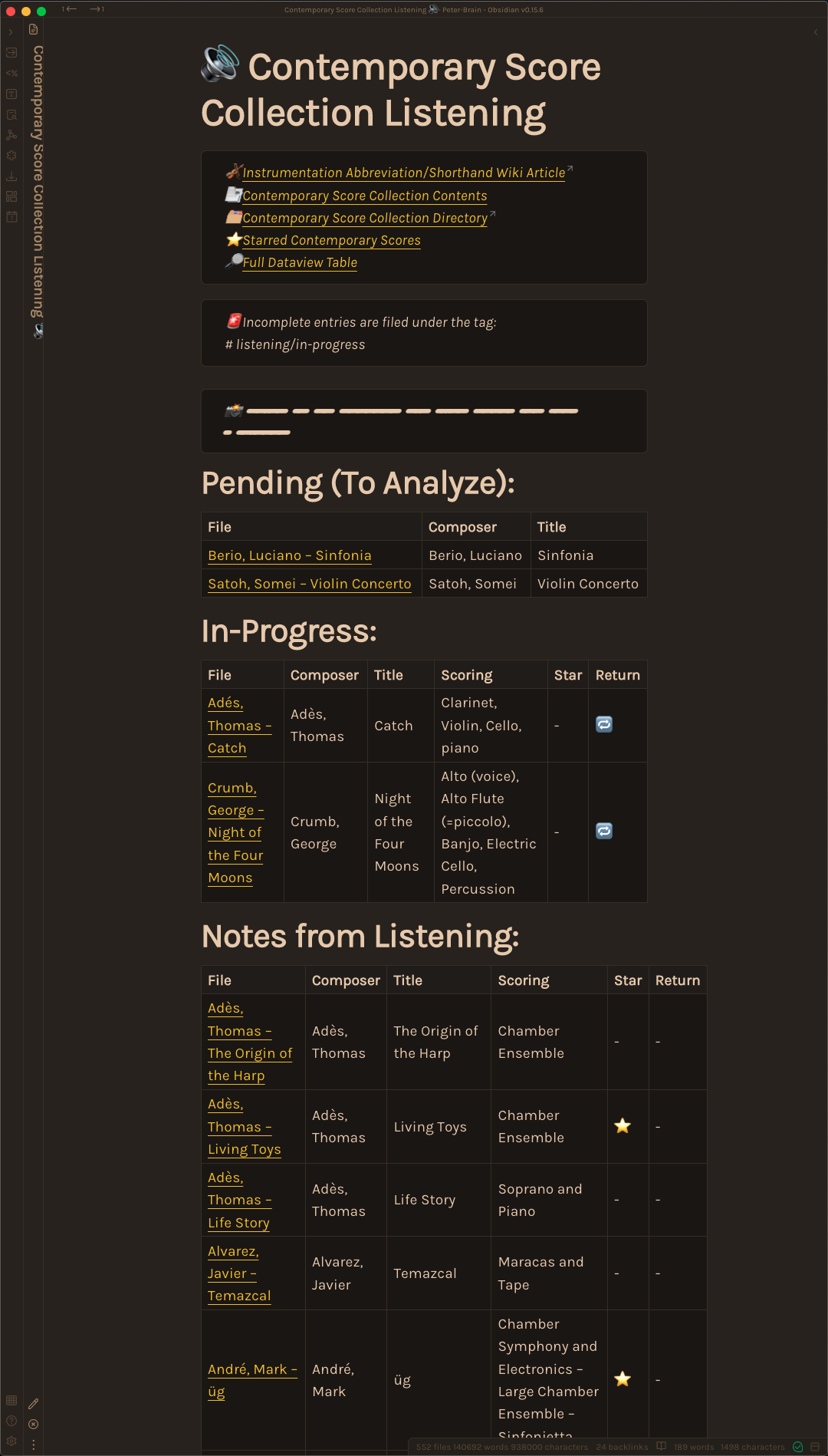Obsidian for Score Study
I’ve been using Obsidian to assist my work as a composer for almost two years. There’s a variety of ways that I’ve found to incorporate Obsidian into my practice, but today I wanted to look at some simple techniques that can help any composer with an important practice: score study.
Score study is exactly what is sounds like – just as poets spend time reading chapbooks and artists spend times at galleries, composers spend time analyzing scores that they love, often listening along to a recording and taking notes. I realized that Obsidian is a fantastic environment for engaging in score study, and I’ve been really empowered to grow my knowledge of composition through my digital note-taking practices.
I started by setting up a sort of “database” note to serve as my starting place for score study – I’m focused on the moment of scores by contemporary composers.
At the top of the note, I’ve got a section with links to:
- The wikipedia article on instrumentation/orchestration abbreviations
- A note listing the physical scores that are available to my in my own collection and a link to scores at my local university library
- A link to the folder where I store my markdown notes on each score I listen to
- A note where dataview tabulates the scores that I’ve starred as especially interesting or worth investigating
- A note that lists my listening notes and shows all the fields where I’ve entered data
I then have a few reminders about my tagging system so that I remember how to mark listening notes that are not yet complete.
Beneath this I have dataview tables that tabulate pieces that I have not yet analyzed but would like to start as well as listening notes that are still in-progress.
Finally, I have the heart of the project – the dataview table listing the works I’ve completed listening notes for. It has been exciting to see this list slowly grow over the past few months – it’s a motivating representation of how much I’ve learned by studying these scores! The third post in this series will look at how to create this table.

In the next post, I’ll unpack the template that I use for taking my listening notes and how it’s proved helpful!
In the mean time, you might want to take a look at some of the following resources on dataview: